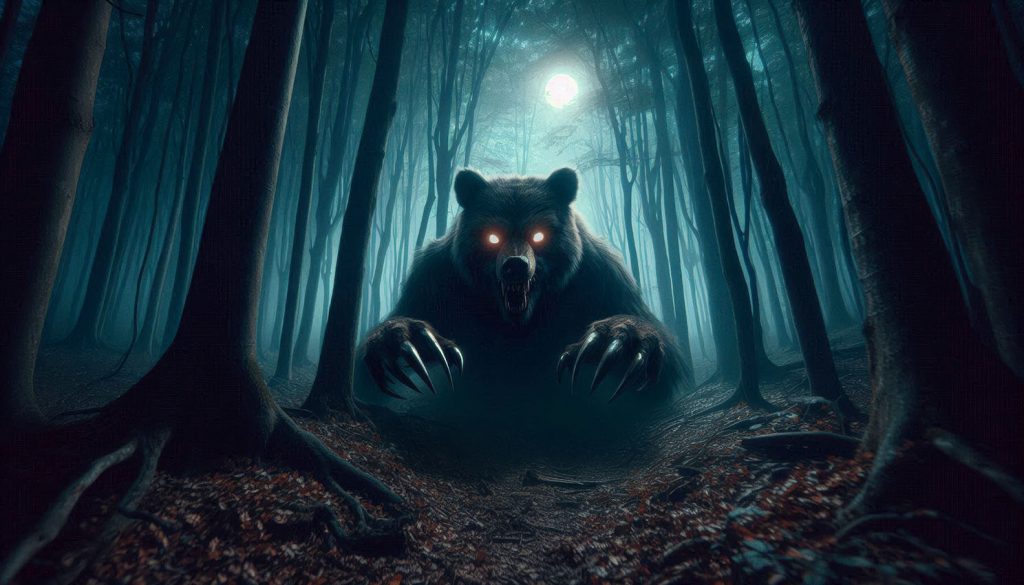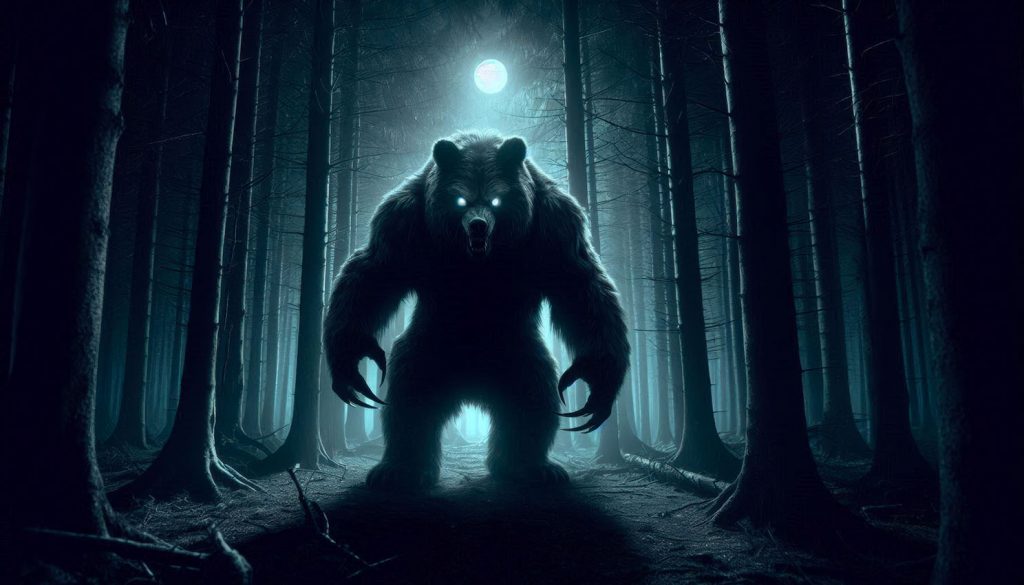Balkan Lore
Photographs, words and illustrations Nick Sidle

Photograph – Northern Kosovo
The term ‘The Balkans’ and related geographical references such as ‘The Balkan Peninsula’ can incorporate varying historical, landform and political components according to use but it is a concept centred on the region of Southeastern Europe and takes its name from the Balkan Mountains of Bulgaria. The Balkans have a long and complex history and are rich in stories from the various cultures and countries that have grown and sometimes collided there over the centuries. These are often oral traditions and frequently have links to the natural world.
Bauk

Digital illustration
The Bauk is a creature from Serbian culture and one to be feared and kept away from. It is said to conceal itself in the dark, to hide in shadowy places and even abandoned buildings and wait for a victim to snatch when they come too close. It can be driven off by light and noise, possibly even killed by direct sunlight. Its movements are ungainly, its eyes pale and its presence malign, it is an evil predator and to be feared. As such, over the years it has made appearances in cautionary tales aimed at children but it is also a threat to adults, not least because of its ability to induce a fear so intense that it completely paralyses a victim.
So where do the stories of the Bauk have their origins? It is very possible that whilst bears disappeared from much of Serbia they were not so quickly forgotten. Although the Bauk is shown in several forms and has even been said to be capable of shape shifting it is the bears and any threat that they posed which probably became enshrined in the stories of the Bauk, a reminder continued to the present day that not everything in nature has always been seen as benign.

Digital illustration
Ljubi


Digital illustrations
In the Albanian tradition a female spirit born out of and embodied in the power of a storm at sea. Often referred to as a demon but also called ‘Mother Lubia’ Ljubi has a serpent’s form and multiple heads. As well as storms she can cause life giving waters to dry up and in return for sparing the world she demands a sacrifice, she is said to have a taste for human flesh.


Digital illustrations
Ljubi is the power of water in the natural world to threaten people through storms but also to take away their lives through drought. The ‘forces of nature’ shaped lives in all cultures from the earliest times. We live today in an era of more extreme weather and climate with both storms and droughts rising in severity and frequency. Perhaps we are all beginning to live in the shadow of Ljubi.


Digital illustrations
Vitorja (Vitore)
Every house should have a guardian and in some Albanian traditions this is a household serpent which is said to be the presence of the souls of ancestors. Whilst very much of recent times with a snake silhouette appearing carved in the walls of many homes a similar belief linked to ancestors has been traced in the region back to prehistory.

Digital illustration
Vitorja are thought to be small, horned and golden in colour and can be heard making hissing sounds to announce major events for the family. Vitorja dwell in the walls of the house and their absence or death, which is thought to be possible, represents a bad portent for the family which may not even survive intact.
There is a horned snake found in the wild in Kosovo. The Horned Viper is one of the most venomous snakes in Europe and clearly has a connection to the stories of Vitorja although the Viper only has one central horn just above the snout which is formed from scales like the rest of the snake’s skin. There is a Viper in the natural world with two horns but you have to travel much further South to the Sahara to find it.

Photograph – Horned or Long-nosed Viper, Vipera ammodytes
Photographs, text and illustrations ©Nick Sidle, all rights reserved